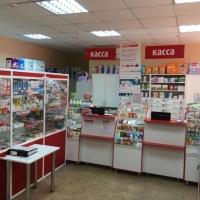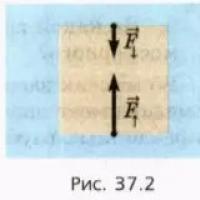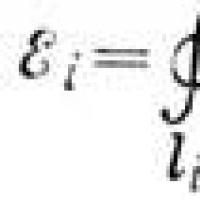Pellet boiler - what it is, what fuel it runs on, design and nuances of choice. Pellets Advantages of using pellets
What are pellet boilers, their characteristics and features
The article was prepared with the participation of DOZATECH specialists
Despite the fact that our country is one of the largest exporters of blue fuel, there is no need to talk about widespread gasification. For many consumers both in Moscow and Siberia, the cheapest heating method is unattainable now, and it is not a fact that it will be available in the future. Therefore, we have to look for alternative heating sources; fortunately, the choice in this area is impressive. And in recent years The range of heating equipment has been replenished with an interesting unit - a pellet boiler. Let us dwell in more detail on this type of equipment, for which we will consider the following aspects:
- What is a pellet heating boiler and what fuel does it use?
- Unit design.
- Advantages and disadvantages of a pellet boiler.
- What to look for when choosing a unit.
What is a pellet boiler
In essence, this is a type of solid fuel boiler, but designed for a specific type of fuel (pellets) and with the possibility of full or partial automation of the work process.
It is the ability to function autonomously with minimal intervention from the owners that makes pellet boilers radically different from conventional solid fuel boilers.
They have a higher efficiency (efficiency factor) - both due to the characteristics of the pellets and due to the design features. Pellet boilers can be either highly specialized - intended only for pellets, or combined (universal) - capable of running on wood or coal, some models operate on almost any biomass; husks, wood waste and the like can be used as fuel.

Alexander DimitrevRepresentative of DOZATECH, a manufacturer of pellet boilers
With a certain boiler design, it can burn any biomass of very low calorie content - wood chips, bark, wood waste, agricultural waste, sunflower husks and more.

Pellets, or wood pellets, are an environmentally neutral fuel, obtained mainly from waste from the wood processing industry (chips, shavings, bark), but they can also be from agricultural waste. Pellets appeared in the thirties of the last century, when the first installation for pressing waste from local sawmills into pellets was invented and tested in the state of Idaho. Under strong pressure, the raw material mass is heated, which provokes the formation of lignin, which binds the smallest particles into dense, smooth granules. This allows you to avoid using chemicals– pellets are completely natural, environmentally safe fuel. The diameter of the granules varies between 6-8 mm, length – up to 50 mm. In European countries, pellets are classified as standardized fuels and are produced according to the DIN plus standard.
In our country, their production is not so developed and supervised; the quality of the granules, on which both the efficiency of the boiler and its performance will depend, is determined visually - white ones are better than gray ones. Unlike wood, pellets have low humidity and increased density, which is why when burning, more heat is released and a minimal amount of carbon dioxide is released. If we translate this property into numbers, for comparison, we get the following ratio: when burning a ton of pellets, the same amount of heat will be released as when burning 1.6 tons of firewood. The ash content will be only 0.5% of the burned volume, and the emitted flue gases will be colorless.
The approximate calorific value of pellets is 5 kW/hour per kilogram, but how close the actual efficiency will be to the theoretical data depends on the quality of the pellets themselves and on the performance of the boiler in which they will be burned.

Unit design
The pellet boiler itself consists of three main components:
- Furnace - equipped with a special burner (retort or torch) and two doors (control, cleaning).
- Convective zone - a heat exchanger is located in it: it can be vertical, horizontal or combined, tubular or plate type. In the convective zone, the coolant in the heat exchanger is heated by gases released during the combustion of pellets. Most units are designed for heating only and have one circuit, but some models have two circuits: heating and water heating.
- Ash pan - it receives combustion waste (insignificant during normal afterburning), which is periodically removed through the cleaning door.
However, the listed components are, although the main part, but only a part, the operation of which requires the APT attachment (automatic fuel supply). This attachment includes the following components:
- A hopper is a container for pellets of a certain volume, from which the pellets enter the combustion chamber; it can be built-in or external.
- Auger - portions feed granules to the burner as needed, driven by a gearbox.
- A fan is necessary to maintain the combustion process, since the boiler design does not provide for natural draft.
Since a pellet boiler is automated system, its device also includes a control unit with a display, which displays information about the current state, and through which the main operating parameters are set. The controller regulates the ignition of the burner, the supply of pellets and air, and stops when the desired temperature is reached, maintaining the heating mode selected by the owner.

Depending on the capacity of the bunker and the selected mode, one fill can be enough for several days, a week or even more.
To make the heating process fully automatic, the boiler can be connected directly to the storage - a pneumatic pipe will supply granules to the bunker as it is emptied.
Advantages and disadvantages of a pellet boiler
One of the main advantages of pellet boilers is their efficiency; in this indicator they are second only to gas main heating. This is also related to high efficiency equipment, and with the high calorific value of pellets, and with their affordable cost. The second aspect that attracts consumers is process automation. Unlike other solid fuel boilers, pellet boilers do not require constant monitoring and regular manual fuel supply. For units operating on diesel fuel, it also wins in terms of environmental friendliness - no odors or black smoke.
The main disadvantage of these units is their substantial price - these are the most expensive solid fuel engines, the cost of an automated station European production measured in hundreds of thousands, domestic ones are slightly cheaper. Not every private owner can afford such infusions into heating system your home. However, with equipment longevity now approaching two decades, it is a wise investment in the long term.

In addition to the high cost, the disadvantages include energy dependence - the automation requires electricity, and if a shutdown of several hours (on average up to 10) is acceptable and will not disrupt the settings, then a longer shutdown will stop the operation of the boiler. The station must be equipped with an independent energy source, which will further increase the cost of the system.
What to look for when choosing a unit
Despite the relative “youth” of this type of solid fuel, there is a large selection of boilers of foreign and domestic production on the market. To choose the optimal unit for your conditions, you should pay attention to several important parameters.
Power – each manufacturer has a fairly wide model range, including both domestic and industrial units. As with any heating equipment, power is measured in kilowatts (kW), the power of household models starts from 15 kW. Since heating a room with average heat loss requires about 1 kW per 10 m², such a boiler is capable of heating a house of 150 m². However, it is worth considering that the boiler is needed with a small margin.
Modern man knows that ecology, efficiency, care for environment and the health of household members is not an empty phrase. In the case of a gas boiler, many problems arise - this includes increased CO emissions, endless red tape with utility services, bribes and fees. In Russia, few owners of private houses have switched to pellets, but the corresponding trend is beginning to gain momentum. Let's see what they are pellet granules, what is their consumption and what are the advantages and disadvantages of this progressive type of heating.
Pellets are
Special pellets made of wood (more often), peat or straw (less often). The cost of purchasing and installing equipment will be approximately the same as in the case of gas equipment, but you can perform all connection-related operations yourself. Daily pellet consumption is approximately 50 kg (an average of two bags) per day. Naturally, it is more profitable to buy pellets wholesale, therefore the boiler owner should provide a dry place for their storage.
Advantages of pellet heating
Heating your home with pellets has many advantages, including:
- no special maintenance required - you can handle ash removal yourself, and most models come with an auto-cleaning function;
- The efficiency is 70-95%, and these are very high figures;
- many models are equipped with a hot water supply circuit;
- the boiler can be installed independently;
- reliable protection against fire and explosions;
- ease of transportation and storage of fuel;
- possibility of working where there are no conditions for gas furnaces.
The main thing is to ensure adequate conditions for storage - the room should not be humid, and foreign odors during operation should also be avoided. No approval is required to connect a pellet stove.
Flaws
There are very few disadvantages to this type of fuel and equipment, and the main one is the high cost of the boiler. It has fallen in recent years, but still remains quite high. In addition, the pellets themselves are not cheap, although their consumption is economical, and purchase and delivery can cause some difficulties, as well as servicing the stove - the fact is that pellets are not yet in such high demand, and in remote areas populated areas you may simply not find a supplier.
Conclusions
Pellet heating is a modern environmentally friendly solution, which is one of the best today. The system requires installation costs, but in general it is economical and, no less important, safe for health.
Traditional firewood, fuel briquettes, coal - all this has its advantages and disadvantages. The choice is dictated by the availability and individual performance properties of each type of fuel, as well as technical characteristics equipment.
In this article we will talk about alternative source thermal energy - pellets for space heating.
Comparative characteristics
Below are the main characteristics of known types of fuel.
- Firewood. The most common and efficient type fuel. For high-quality heating of premises, wood should have no more than 25% humidity. If this indicator is higher, the firewood may not ignite or will smoke heavily. Their main and, perhaps, only drawback is the need to constantly monitor the amount of fuel in the burner. By the way, unlike pellets, the supply of which is carried out fully automatically - it is enough to pour a portion of fuel into the firebox once, and this will be enough for several days of boiler operation.
Firewood - relatively cheap material, if you prepare them yourself. Ordering dry wood, chopped into neat segments, will cost 2-3 times more. Coniferous species (spruce, pine) are among the most expensive, but burn out faster than others. Oak, hornbeam, maple, ash are premium options. Birch, alder, and aspen occupy an intermediate position in price and properties.
- Coal. This type of fuel has excellent combustion duration and the amount of thermal energy released. However, the disadvantages are no less significant. In particular, after the combustion of coal, a large volume of slag remains inside the boiler, so it will have to be cleaned regularly. Second minus - bad smell, spreading throughout the room.
- Fuel briquettes. They are nothing more than waste from the woodworking industry compressed into small blocks. Like fuel pellets, briquettes are environmentally friendly and leave minimal waste. For some, the decisive factor may be that they do not require retrofitting the boiler.
It is not recommended to use cheap briquettes made from waste fiberboard, chipboard or MDF boards - they contain many harmful substances, in particular, furniture glue. It is easy to distinguish such fuel by white color and fine-grained structure.
- Pellets. They are produced in the same way as briquettes, only pressed into small granules. They require additional heating equipment with a special pellet burner. This will entail additional expenses, but will be fully compensated by the efficiency and cost-effectiveness of consumption.
The choice of the type of solid fuel for the boiler is limited only by the budget and your own ideas about efficiency.
Note that Kupper boilers operate on all types of fuel, so here the user is not limited in choice by anything other than the budget and his own ideas about the effectiveness of a particular type.
Please note that boiler equipment produced by the Teplodar company is characterized by the maximum configuration, among other analogues on the market. The basic delivery set includes accessories for cleaning the boiler, a heating element block, a thermometer and a rotary gate made of stainless steel.
Pellets for boilers: advantages and disadvantages
The main advantages of fuel pellets include:
- efficient heat generation with more than a small consumption (1 ton of pellets provides the same amount of thermal energy as 1.5 tons of firewood or 500 m 3 of gas);
- minimum waste (ash is 1% of the initial volume of fuel);
- rarely clean the boiler (no more than 1-2 times a month);
- uniform combustion and constant temperature;
- no sparking;
- ease of transportation (pellets are supplied in bags);
- absence of unpleasant odors;
- environmental cleanliness (only 0.03% sulfur is produced during combustion);
- ash can be used as fertilizer;
- reasonable cost of fuel;
- No permits are required to equip the boiler with a pellet burner.
Solid fuel has such an indicator as calorific value - the amount of energy obtained from the combustion of 1 kg of material. For pellets it is 4500-5300 kcal/kg, which is comparable to the calorific value of black coal and dry firewood.
This fuel has only one drawback: before using pellets, you will have to buy a special burner.
The use of pressed granules sometimes requires the purchase of a new boiler, although more often you can get by with retrofitting an existing one. Special devices that operate only on this fuel include pellet boilers. The devices organize a complete heating circuit inside the house, and also provide the owners with hot water.
Before using pellet fuel, you will have to buy a special burner.
Selection rules
Alas, not every manufacturer supplies products good quality to the consumer. Next - about the types of fuel and how to determine the quality of pellets by appearance.
Pellets consist of sawdust, shavings, may include straw, peat, and seed shells.
In the Russian Federation, fuel standardization is poorly developed, so low-quality products are, unfortunately, quite common.
Typically, fuel is supplied in bags (packages) from 5 to 25 kg. It’s good if you can look inside and assess the condition of the granules. Some recommendations for choosing fuel:
- the less dust, fines, broken granules, the better;
- the color of high-quality pellets is brown or slightly lighter;
- the dark color of the fuel is a sign of a high concentration of bark, which impedes combustion;
- the lighter the granules, the more chemical impurities they contain.
The main criterion for classifying fuel by quality is moisture. There are three classes:
- first (minimum humidity, heat transfer up to 95%, high cost);
- second (intermediate option in terms of price and quality);
- third (the fuel is noticeably moist, smokes heavily, leaves a lot of ash, and is cheap).
The cost of pellets of classes I and III differs by 20-30%.
Typically, pellets are supplied in bags (packages) from 5 to 25 kg. It’s good if you can look inside and assess the condition of the granules.
Conditions of storage and use
When purchasing a large batch of pellets, you need to take care of where they are stored. When stored indoors, they should not be placed near open sources of fire. It is also necessary to protect the material from its worst enemy - dampness.
How to store pellets if there is no space in the house? Closed bags/packages can be placed outside under a canopy. However, this option is undesirable - when it rains, the risk of the packaging getting wet and irreversible damage to the fuel increases.
A few words about how to properly heat a solid fuel boiler with pellets. This requires a burner, which can be purchased separately and installed on the boiler literally within half an hour. The operation of such a tandem is extremely simple - the user will need to fill the hopper with fresh pellets from time to time and clean out the ash. The temperature balance is controlled using the control panel.
Fuel pellets - economical, affordable, effective solid fuel. And, although the cost of a special pellet burner is quite high, within no more than 1 year the investment in the equipment will fully pay off.
Attention! New! High-precision CCD laser machine IL-6090 SGC (with camera), equipped with an advanced optical object recognition system. Thanks to modern software and high-quality components, the machine is able to independently recognize and scan the necessary objects from a variety of presented ones, and then cut them out within the specified boundaries according to the required parameters.
Good afternoon The INTERLASER company informs you about a huge supply of lenses and mirrors for laser equipment. The lowest prices for lenses and mirrors: Lenses for ZnSe laser machines (USA): diameter 20, focus 2 (50.8 mm) - 3,304 rubles diameter 20, focus 5 (12.7 mm ) - 3,304 rubles diameter 25, focus 2.5 (63.5 mm) - 7,350 rubles Lenses for ZnSe lasers (China): diameter 20, focus 2 (50.8 mm) - 2,450 rubles diameter 20, focus 5 (127 mm) - 2,450 rubles diameter 25, focus 2.5 (63.5 mm) - 4,900 rubles Mirrors: diameter 20 mm, thickness 2/3 mm - 840 rubles diameter 25 mm, thickness 2/3 mm - 980 rubles diameter 30...
Pellet mill - designed for the production of wood pellets (pellets) from dry wood waste. The main processed raw material is sawdust. Small pellet mills allow you to produce granules from any biomass. Small pellet mills are in demand in private households, as well as in small industries. They are used for the production of pellets, for heating premises, as well as for the production of animal feed. more details......
INTERLASER is pleased to inform its customers about a significant (12.5%) reduction in the price of milling machines model Carver-0609. New models of Carver-0609 milling machines are equipped with a 1.5 kW water-cooled spindle, electronic sensor table zero point, improved HIWIN rail guides (Taiwan) on all axes, also included with the machines water pump. Control milling machine carried out via a DSP controller, Type3 software is included. Equipment is delivered within 60 working days from the date of advance payment (70% of the cost). For any questions, please contact our sales offices by phone numbers listed on the website.
Attention! New equipment is expected to arrive! The INTERLASER company informs its customers about the planned deliveries of fiber-optic laser markers for metal to the Company's warehouse in the near future!
During the period from February 28 to March 2, 2012, our Company took part in the Federal Wholesale Exhibition-Fair “TEXTILLEGPROM” (Moscow, All-Russian Exhibition Center, pavilion 55, 1st floor, stand A-12). At the exhibition we presented the HX 1290SE laser engraving machine and the RABBIT 1120H plotter. Our experts demonstrated to exhibition visitors the wide capabilities of a laser machine for cutting, laser cutting and engraving of textile materials, leather, plastic and veneer. Also, the work of a plotter for cutting rolled materials was demonstrated. All equipment samples brought to the exhibition were sold directly from the stand at the end of the exhibition. You can find a photo report on the exhibition in the photo gallery section.
 What documents are evidence that the apartment is a service apartment?
What documents are evidence that the apartment is a service apartment? Space donut hole
Space donut hole Types of discounts on Russian Railways tickets and rules for obtaining them Train tickets for students
Types of discounts on Russian Railways tickets and rules for obtaining them Train tickets for students Lecture on syndromic pathology
Lecture on syndromic pathology Organizational aspects of the activities of pharmacy organizations
Organizational aspects of the activities of pharmacy organizations Water pressure in the depths of the ocean Practice reports
Water pressure in the depths of the ocean Practice reports What is inductance, its definition and unit of measurement
What is inductance, its definition and unit of measurement